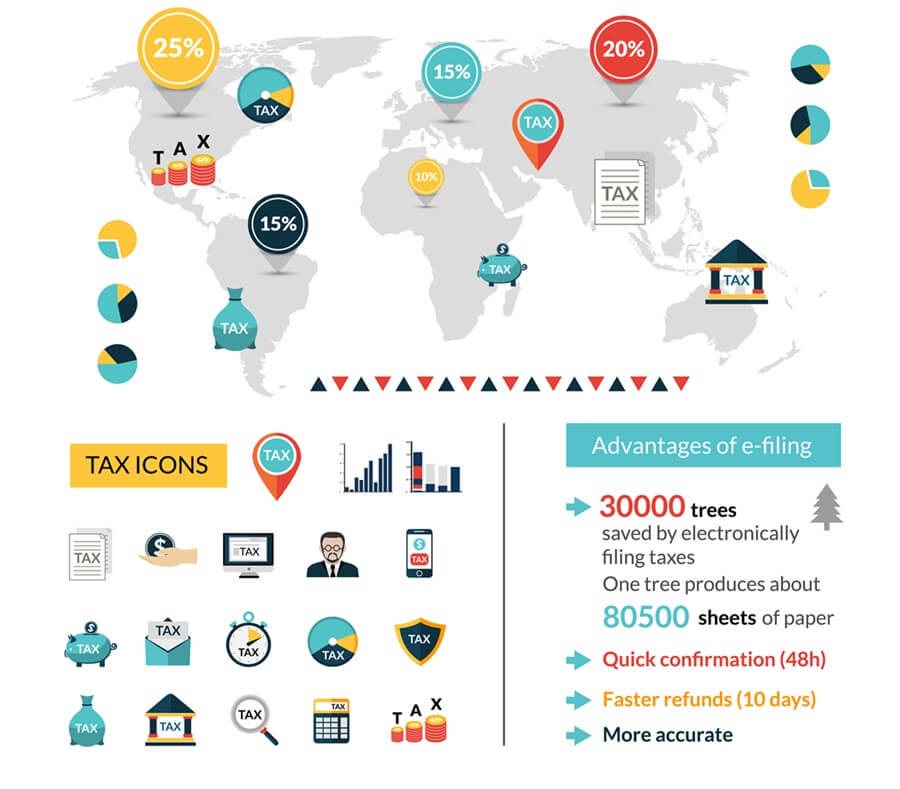VAT Management for Multi-Location Businesses
Operating a business with multiple physical locations adds complexity to VAT compliance. More locations mean more VAT registrations, filings, and localized supplies to track. Without proper VAT controls, multi-site businesses risk non-compliance penalties or missing out on available deductions. This guide provides best practices for multi-location companies to simplify VAT management.
Understanding VAT Requirements for Each Location
The first step is confirming the VAT position for each business location. Key considerations per site include:
- Local VAT Registration – Each fixed place of business generally requires a separate VAT registration with turnover reported only for that location. Temporary pop-ups may be covered under the existing registration.
- VAT Rates – Scotland and Northern Ireland have certain goods taxed differently so the place of supply matters.
- Regional Supplies – The VAT treatment of B2B transactions depends on the customer’s location.
- Overseas Locations – Different VAT rules apply for locations outside the UK like Europe.
Reviewing the VAT implications for each location’s sales and purchases enables accurate reporting.
Tracking Regional Turnover
A multi-site business must segregate taxable turnover by location in their accounting system. Do not co-mingle totals across locations.
For proper VAT reporting, you need turnover broken down by:
- Standard, reduced, and zero rated supplies
- UK vs overseas customers
- Exempt supplies
- Location
Accounting software with multi-entity capabilities helps segment this data.
Filing Separate VAT Returns
Each registered business location must file separate VAT returns reporting only that site’s turnover.
Submit the returns under each location’s unique VAT registration number. Filing combined totals is not permitted under HMRC’s guidance for multi-location entities.
Allocating VAT to Each Unit
Carefully allocate VAT paid on expenses to the appropriate location. Only input tax related to each site’s turnover can be recovered on that location’s VAT return.
Avoid centrally paying for all VAT then apportioning deductions across units. Directly assign purchase invoices to streamline allocations.
Managing VAT on Intra-Company Transfers
Sales of stock or assets between related sites fall under business-to-business VAT rules. This includes:
- Issuing VAT invoices for transfers between locations.
- Declaring the VAT on dispatches from sending unit.
- Reclaiming VAT on receipts by receiving unit.
Keep diligent records of intra-company transfers.
Analyzing VAT Positions of Each Unit
Regularly review the VAT position of each location – are some consistently in a repayment versus liability position?
Analyzing discrepancies helps assess if restructuring or process changes could optimize for the group. Locations making exempt supplies may trend toward repayments.
Centralizing VAT Reconciliation
Reconcile total input and output VAT across the group frequently. This uncovers inconsistencies between locations that could indicate issues. Perform reconciliations prior to submitting returns.
Outsourcing to VAT Accountants
Managing multi-location VAT across registrations and entities is complex, making outsourcing to specialists advisable.
VAT consultants ensure every site complies fully. They also identify group efficiencies.
Seeking Permission for VAT Grouping
For major simplification, large multi-location companies may seek HMRC approval for VAT grouping. This allows:
- One consolidated VAT return filed for the group
- VAT accounted for on transfers between units
Approval depends on meeting strict ownership, control, and business activity criteria.
Key Considerations for Multi-Site VAT
In summary, optimal multi-location VAT management involves:
- Understanding local VAT rules for each unit
- Maintaining entity separation in accounting systems
- Filing individual returns per registration
- Careful allocation of VAT expenses to each site
- Managing VAT on intra-company transfers
- Reconciling total VAT across the group
- Outsourcing complex VAT functions
- Exploring potential VAT grouping
With robust VAT processes and controls tailored to their multi-entity needs, multi-location businesses can achieve compliance, maximize deductions, and avoid penalties.







